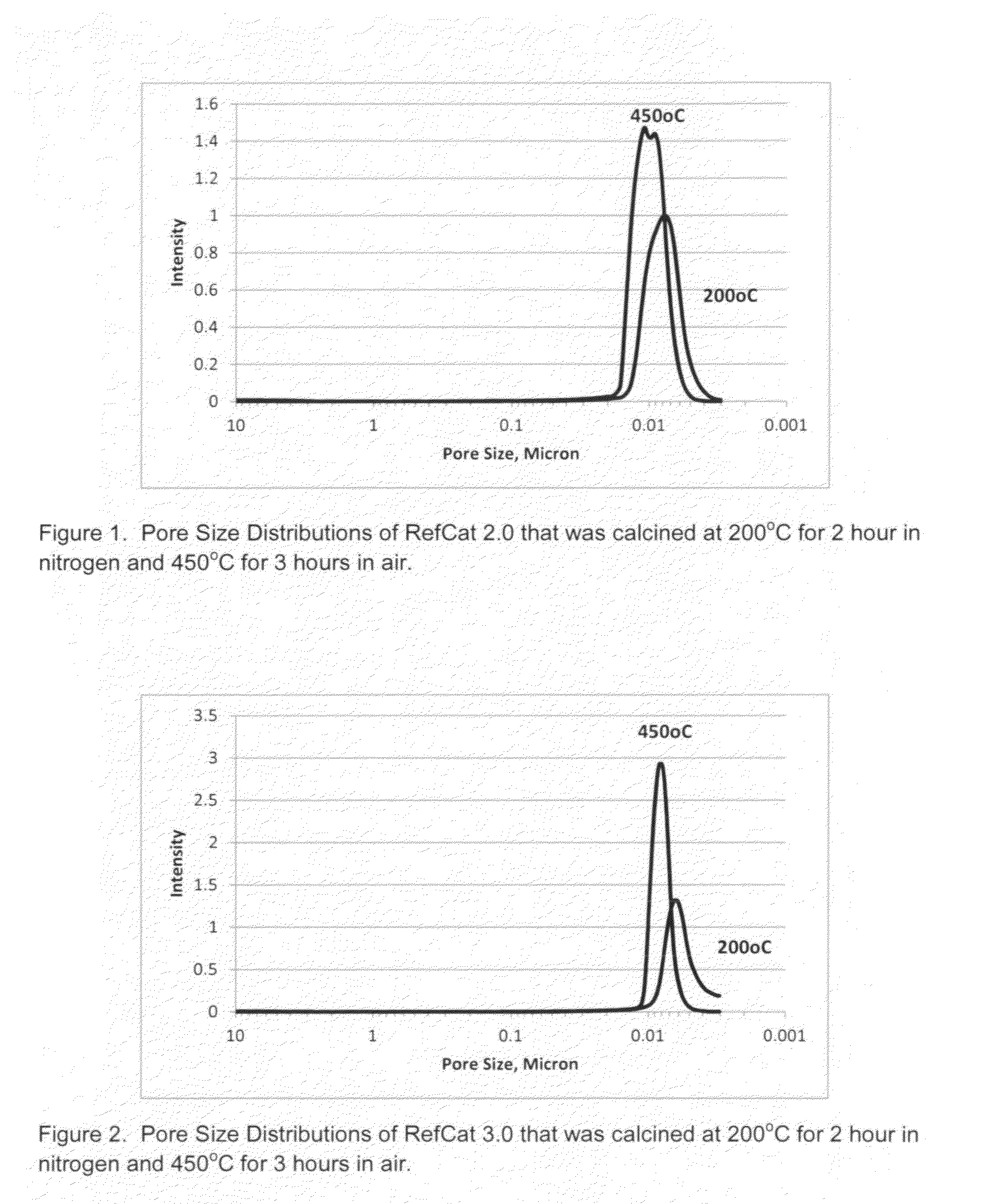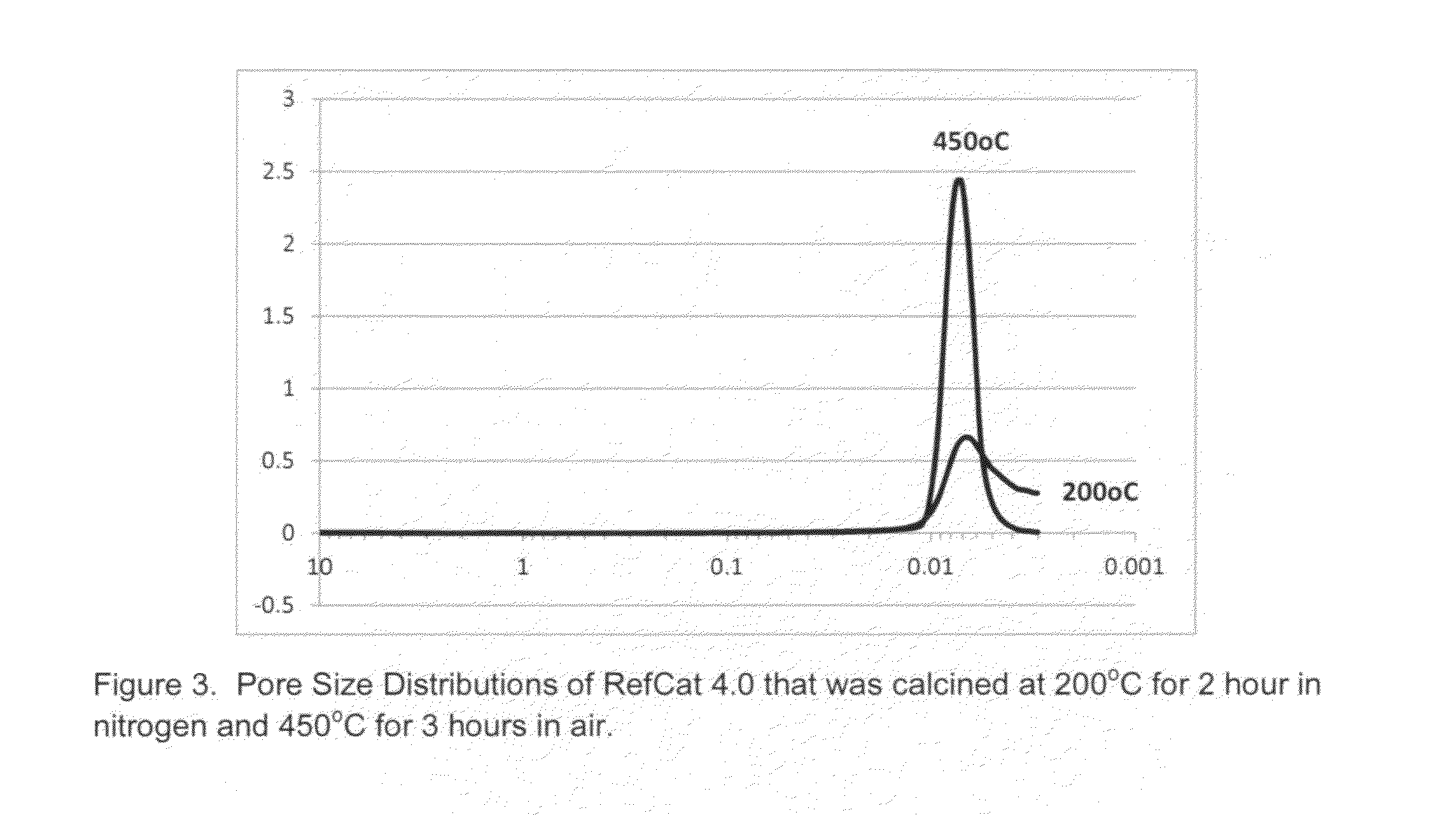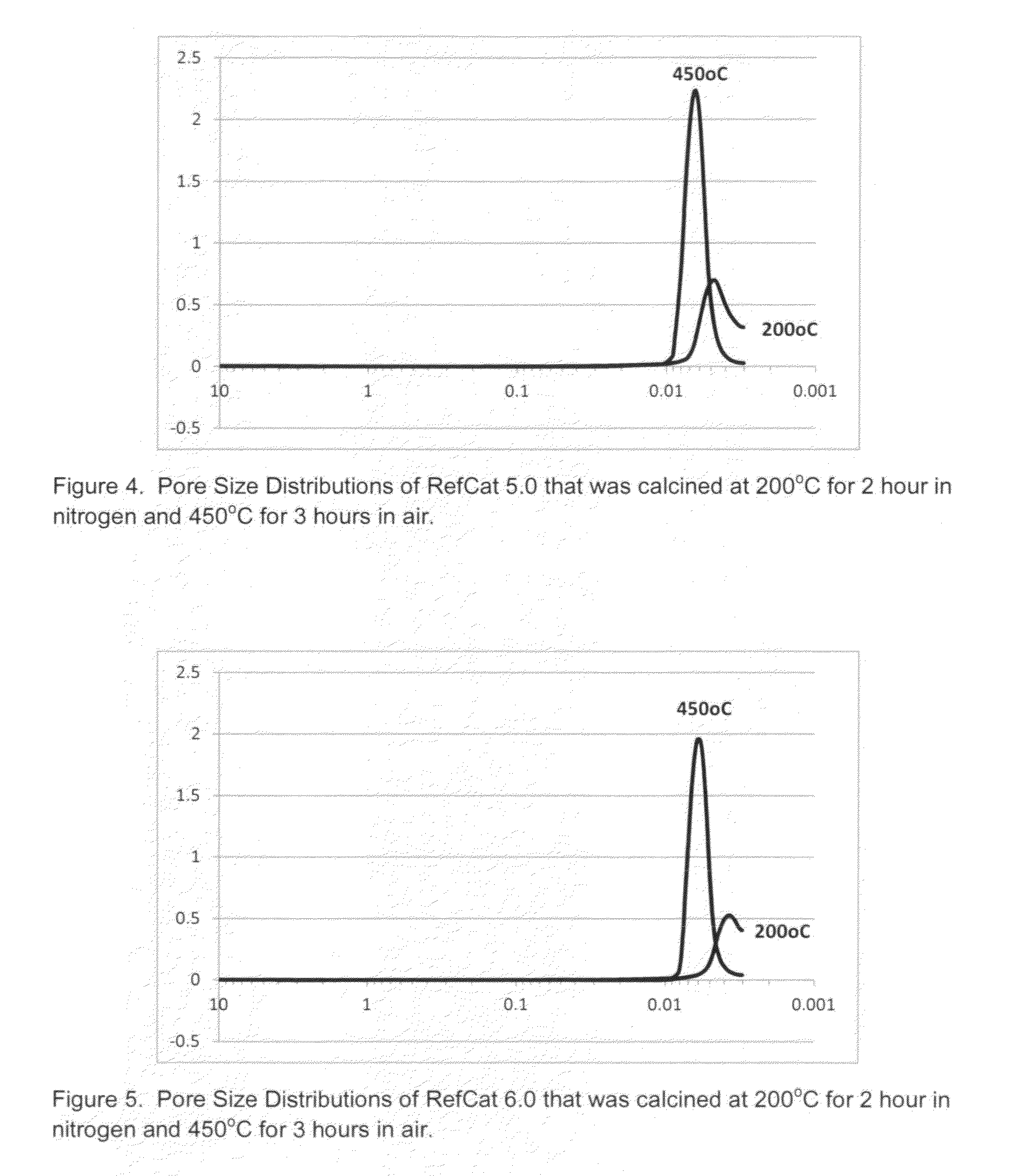Nickel-based reforming catalyst
- Summary
- Abstract
- Description
- Claims
- Application Information
AI Technical Summary
Benefits of technology
Problems solved by technology
Method used
Image
Examples
example 1
RefCat 2.0 Containing Ni and Al
[0070]The nickel carbonate powders containing 46% Ni (15.2 g) were dispersed in 148 grams of water under stirring conditions in a 400 mL beaker. Then, 16.3 grams of acetic acid were added into the nickel carbonate slurry. The slurry was then heated to dissolve nickel carbonate, evolving carbon dioxide gas until the solution of nickel acetate became clear. The obtained nickel acetate solution was cooled down to room temperature and became Solution I.
[0071]Subsequently, 5.5 grams of baking soda (NaHCO3) powder were weighed into a 1000 mL beaker. Then, 359 grams of water were added into this 1000 mL beaker. Under mixing conditions, 16.5 grams of caustic soda (50% NaOH) were then added into the baking soda solution. Next, 14.99 grams of sodium aluminate solution (20.2% alumina), SAX-19 from Kemira, were added into the above 1000 mL beaker containing a solution of NaHCO3 and NaOH, under mixing conditions. The resulting solution became Solution II.
[0072]Unde...
example 2
RefCat 3.0 Containing Ni, Al, and Zr
[0073]The nickel carbonate powders containing 46% Ni (14.06 g) were dispersed in 138 grams of water under stirring conditions in a 400 mL beaker. Then, 15.2 grams of acetic acid were added into the nickel carbonate slurry. The slurry was then heated to dissolve nickel carbonate, evolving carbon dioxide gas until the solution of nickel acetate became clear. The obtained nickel acetate solution was cooled down to room temperatures and became Solution I.
[0074]In a 100 mL beaker, 2.8 grams of acetic acid were mixed into 9.6 grams water under mixing conditions. Then, 4.7 grams of ammonium zirconium carbonate (20% zirconia) were dripped into the acetic solution under mixing. It was observed that carbon dioxide gas evolved out of the solution. After the reactions were complete, the pH of the solution containing zirconium was measured to be about 5.0. This clear solution containing zirconium was then dripped into Solution I under mixing conditions. The cl...
example 3
RefCat 4.0 Containing Ni, Al, Zr, and Ce
[0077]The powders of nickel carbonate containing 46% Ni (13.75 g) were dispersed in 134.6 grams of water under stirring conditions in a 400 mL beaker. Then 15.0 grams of acetic acid were added into the nickel carbonate slurry. The slurry was then heated to dissolve nickel carbonate, evolving carbon dioxide until the solution of nickel acetate became clear. The obtained nickel acetate solution was cooled down to room temperatures and became Solution I.
[0078]In a 100 mL beaker, 2.9 grams of acetic acid was mixed with 9.5 grams of water under mixing conditions. Then, 4.6 grams of ammonium zirconium carbonate (20% IRCONIA) was dripped into the acetic solution under mixing. It was observed that carbon dioxide gas evolved out the solution. After the reactions were complete, the pH of the solution containing zirconium was measured to be about 5.0. This clear solution containing zirconium was then dripped into Solution I under mixing. The clear soluti...
PUM
| Property | Measurement | Unit |
|---|---|---|
| Fraction | aaaaa | aaaaa |
| Percent by mass | aaaaa | aaaaa |
| Size | aaaaa | aaaaa |
Abstract
Description
Claims
Application Information
 Login to View More
Login to View More - R&D
- Intellectual Property
- Life Sciences
- Materials
- Tech Scout
- Unparalleled Data Quality
- Higher Quality Content
- 60% Fewer Hallucinations
Browse by: Latest US Patents, China's latest patents, Technical Efficacy Thesaurus, Application Domain, Technology Topic, Popular Technical Reports.
© 2025 PatSnap. All rights reserved.Legal|Privacy policy|Modern Slavery Act Transparency Statement|Sitemap|About US| Contact US: help@patsnap.com



